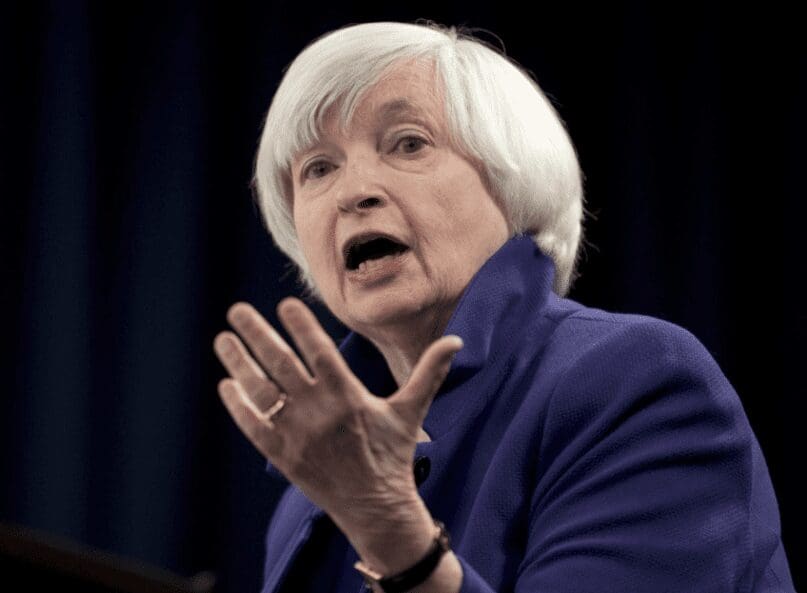Should the massive federal assistance have been more targeted? We should be glad it wasn’t.
Both progressives and conservatives criticized the three major COVID-19 relief laws enacted over the last 12 months for giving away too much of their $4.85 trillion in new spending, tax credits, and sweetheart loans to businesses or city and state governments that don’t need the help. While attracting fewer complaints, the three relief Acts—the CARES Act of March 2020, the Coronavirus Supplemental Appropriations of December 2020, and the American Rescue Plan of March 2021—also provided $858 billion in direct payments to most American households, unconnected to any showing of economic need related to the pandemic. This has been a bipartisan version of Keynes on steroids, with nearly everyone receiving some form of government help.
As it happened, most households and businesses would weather the pandemic with little direct economic loss.
But under both the Trump and Biden administrations, the government’s efforts around the pandemic have reflected an unspoken but decided view that a smaller, better-targeted approach could risk the economy.
And that view is almost certainly correct: This time, as an economic matter, too much is probably just about right.
The pandemic has wreaked personal and economic havoc with people’s lives but in very skewed ways. Some 30 million Americans, or about 9 percent of Americans, have been infected, and nearly 600,000 of them have died. Millions more have suffered real economic setbacks.
During the second quarter of last year, 45.4 million Americans filed initial claims for unemployment benefits. For these frontline economic casualties of COVID-19 – 30 percent of everyone working — the CARES Act provided $268 billion to add $600 per week to jobless benefits from April through August of 2020.
That raised the average weekly benefit from $320 to $920, and the two subsequent pandemic relief Acts extended the add-on at $300 per week.
When Congress passed the CARES Act last March, the economy was in free fall: In the second quarter, GDP would shrink more than 9 percent, or 33 percent at an annual rate. So, on top of the additional jobless benefits, Congress provided $293 billion for direct checks or tax credits of $1,200 for most adults, regardless of their work status, and $600 for most children, on top of $377 billion for businesses under the Payroll Protection Program, up to $500 billion in low-interest loans for large corporations, and $150 billion for state and local governments.
No one could have known last March that a sizable majority of the country wouldn’t need help. Jobs and incomes began to bounce back last summer; even as COVID-19 continued to spread. While the economy continued to improve through the pandemic’s terrible third wave from October to mid-January of this year, Congress responded with two more mammoth relief measures, one in late December, and then the American Rescue Plan passed this March.
The two acts provided $310 billion for the $300 per-week add-ons to people’s jobless benefits, even as most of those who had lost their jobs had been rehired.
They also provided $565 billion in new direct support for 85 percent to 90 percent of all households. That additional assistance came in checks or tax credits of $2,000 for most adults, $3,000 per child, and $3,600 for young children plus $84 billion more in direct support to cover up to $8,000 in childcare expenses.
Again, the test for receiving these new rounds of assistance was not whether a household suffered pandemic-related losses, but whether its adjusted gross income in 2018 or 2019 was less than $150,000 (for a couple, less than $75,000 for an individual).
Add it all up, and the three Acts provided a family of two adults with two children earning the median income of $68,703 in 2019, or more than double that amount, government checks or tax credits totaling $14,800 to $16,000—plus another $8,000 for childcare costs.
The data strongly suggest that the 70 percent of working Americans who did not lose their jobs and almost all retired people did not need anything approaching that much emergency help because they haven’t borne any notable economic costs from the pandemic. The Bureau of Economic Analysis reports that total wage and salary income rose in 2020 despite the spike in unemployment—and that does not count any of the pandemic-related checks, tax credits, and jobless benefits. When we include the benefits under the CARES Act, the total personal income of Americans grew by $1,140 billion in 2020—before the additional assistance passed last December and in March 2021. In 2019, total personal income increased by $700 billion.
The politics behind this broad-brush generosity are not subtle. The pandemic inflicted stress, anxiety, and demoralizing isolation on almost everyone. With most Americans dispirited and on edge, both parties excluded the most affluent households and opted against picking and choosing those who most needed help among the other 85 to 90 percent of the country.
Apart from the political benefits, this broad-brushed approach makes real economic sense. It’s mainly about the saving rate. Most Americans responded to the coronavirus pandemic by saving much more of their incomes, in part because so many brick-and-mortar businesses were closed, but mainly in case conditions became even worse.
The personal savings rate in 2019 had averaged 7.6 percent. By the second quarter of 2020, it soared to 26.0 percent, despite spiking unemployment that briefly depressed total incomes.
Throughout 2020, Americans on average saved 16.3 percent of their disposable incomes and put aside $1.63 trillion more than they had in 2019. The last time the personal saving rate exceeded 16.3 percent was 1945.
That’s why we needed such massive and indiscriminate support from the government. Consumer spending rebounded strongly in the third quarter of 2020, and the economy began to recover because the broad-based checks and tax credits from the CARES Act bridged the gaps between incomes, high precautionary savings, and rising consumption. By the fourth quarter, the CARES Act’s bounties were gone, the pandemic was resurging, and the fledgling recovery was at risk. Wage and salary income were rising with employment, but the high saving rate was sharply slowing consumption. Enter two more rounds of checks and tax credits for households and expanded jobless benefits passed in late December 2020 and early March 2021.
Supporting the economy with large injections of cash linked little (if at all) to actual pandemic-related losses is also evident in the $30.5 billion in new grants for transit systems, the $82.5 billion bailout for certain pension plans, and much of the payroll protection program. Congress also provided more temporary help for low-income Americans who have long needed it, including additional rent assistance, food stamps, and health insurance subsidies.
It is all part of the same story: The economy will remain fragile until the pandemic is over, and a fragile economy needs measures that give most people more resources to spend as well as save.
Congress did bar higher-income Americans from its bounty of government checks and tax credits, but the Federal Reserve stepped into that breach. In much the same way that the checks and tax credits prevented economic demand from collapsing, the Fed prevented a possible financial crisis through purchases that an additional $3.4 trillion in credit for financial markets. This flood of new credit has directly supported stock and bond prices, directly benefiting the top 10 percent of Americans that own about 85 percent of those financial assets.
Thanks to the Fed, the pandemic brought on a new bull market for affluent people, with the S&P 500 recovering all of its early-2020 losses by last August and closing most recently 17 percent above its pre-pandemic high.
These massive fiscal and monetary interventions are as unprecedented as the sustained public health crisis that dictated them. Ironically, they accomplished their missions—and attracted the overwhelming public support they needed to pass—by not targeting their enormous resources. John Maynard Keynes would have expected nothing less, and we all are better off for it.
_____
Robert Shapiro is the chairman of Sonecon and a senior fellow at the McDonough School of Business at Georgetown University. He served as undersecretary of commerce for economic affairs under Bill Clinton.
To see original article please visit: https://washingtonmonthly.com/2021/03/24/the-trillions-in-covid-spending-is-what-the-economy-needed/





















